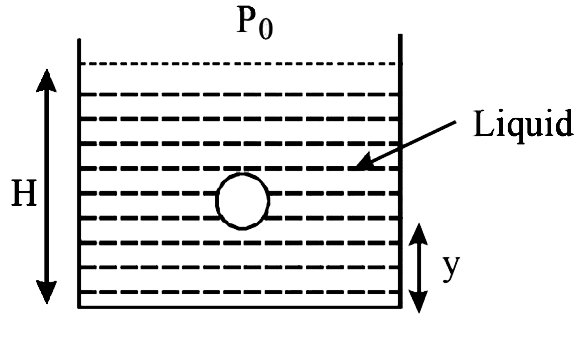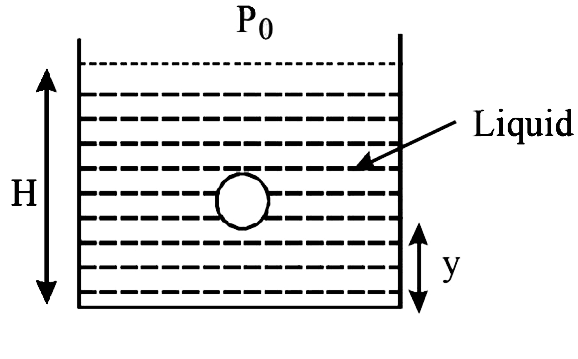Bubble gum contains
buna - S rubber
buna - N rubber
neoprene
natural rubber
The correct Answer is:A
Step-by-Step Solution:
1. Identify the Composition of Bubble Gum:
- Bubble gum primarily contains a type of synthetic rubber known as "Buna-S" rubber.
2. Understanding Buna-S Rubber:
- Buna-S rubber is a copolymer made from two monomers: 1,3-butadiene and styrene.
3. Chemical Structure of Monomers:
- 1,3-Butadiene: The chemical structure is represented as CH2=CH-CH=CH2. This molecule has two double bonds.
- Styrene: The chemical structure is represented as CH2=CH-C6H5 (where C6H5 represents a benzene ring). This molecule has one double bond.
4. Polymerization Process:
- The polymerization of 1,3-butadiene and styrene occurs under specific conditions, typically in the presence of sodium metal and heat. This process allows the double bonds in the monomers to react and form long chains, resulting in the formation of Buna-S rubber.
5. Final Structure of Buna-S Rubber:
- The final structure of Buna-S rubber can be represented as a long chain where the repeating units consist of both 1,3-butadiene and styrene. The structure will include alternating units of the two monomers.
6. Conclusion:
- Therefore, the main component of bubble gum is Buna-S rubber, which is synthesized from the copolymerization of 1,3-butadiene and styrene.
- Bubble gum primarily contains a type of synthetic rubber known as "Buna-S" rubber.
- Buna-S rubber is a copolymer made from two monomers: 1,3-butadiene and styrene.
- 1,3-Butadiene: The chemical structure is represented as CH2=CH-CH=CH2. This molecule has two double bonds.
- Styrene: The chemical structure is represented as CH2=CH-C6H5 (where C6H5 represents a benzene ring). This molecule has one double bond.
- The polymerization of 1,3-butadiene and styrene occurs under specific conditions, typically in the presence of sodium metal and heat. This process allows the double bonds in the monomers to react and form long chains, resulting in the formation of Buna-S rubber.
- The final structure of Buna-S rubber can be represented as a long chain where the repeating units consist of both 1,3-butadiene and styrene. The structure will include alternating units of the two monomers.
- Therefore, the main component of bubble gum is Buna-S rubber, which is synthesized from the copolymerization of 1,3-butadiene and styrene.
Topper's Solved these Questions
Similar Questions
Usha took a lump of dry soil in a glass and added water to it till it was completely immersed. She observed bubbles coming out. The bubbles contain
View SolutionA rubber band stretches and reverts back to its original position. Bubble gum stretches but it would not return to its original position.
Is there anydifference between the two processes ? Discuss it with respect to plant growth (hint elasticity (reversibel) plasticity (irresversible)
View Solution
Knowledge Check
A small spherical monoatomic ideal gas bubble (γ=5/3) is trapped inside a liquid of density ρ (see figure). Assume that the bubble does not exchange any heat with the liquid. The bubble contains n moles of gas. The temperature of the gas when the bubble is at the bottom is T0, the height of the liquid is H and the atmospheric pressure P0 (Neglect surface tension).

As the bubble moves upwards, besides the buyoncy force the following forces are acting on itAOnly the force of gravityBThe force due to gravity and the force due to the pressure of the liquidCThe force due to gravity, the force due to the pressure of the liquid and the force due to viscocity of the liquidDThe force due to gravity and the force due to viscocity of the liquidA small spherical monoatomic ideal gas bubble (γ=5/3) is trapped inside a liquid of density ρ (see figure). Assume that the bubble does not exchange any heat with the liquid. The bubble contains n moles of gas. The temperature of the gas when the bubble is at the bottom is T0, the height of the liquid is H and the atmospheric pressure P0 (Neglect surface tension).

When the gas bubble is at a height y from the bottom, its temperature is-AT0(P0+ρlgHP0+ρlgy)2/5BT0(P0+ρlg(H−y)P0+ρlgH)2/5CT0(P0+ρlgHP0+ρlgy)3/5DT0(P0+ρlg(H−y)P0+ρlgH)3/5A small spherical monoatomic ideal gas bubble (γ=53) is trapped inside a liquid of density ρl (see figure) . Assume that the bubble does not exchange any heat with the liquid. The bubble contains n moles of gas. The temperature of the gas when the bubble is at the bottom is T0, the height of the liquid is H and the atmospheric pressure is P0 (Neglect surface tension).
_E01_434_Q01.png)
When the gas bubble is at a height y from the bottom , its temperature is :-AT0(P0+ρlgHP0+ρlgy)2/5BT0(P0+ρlg(H−y)P0+ρlgH)2/5CT0(P0+ρlgHP0+ρlgy)3/5DT0(P0+ρlg(H−y)P0+ρlgH)3/5
A beaker exactly full of water has an ice piece floating on it. As the cube melts what happens to the water level if (a) the cube contains an air bubble, (b) the cube contains (i) a lead piece and (ii) a cork piece.
View SolutionA glass sphere of (μ=1.5) with a radius of 15.0cm has a tiny air bubble 5cm above its centre. The sphere is viewed looking down along the extended radius containing the bubble. What is the apparent depth of the bubble below the surface of the sphere?
View SolutionA small spherical monoatomic ideal gas bubble (γ=5/3) is trapped inside a liquid of density ρ (see figure). Assume that the bubble does not exchange any heat with the liquid. The bubble contains n moles of gas. The temperature of the gas when the bubble is at the bottom is T0, the height of the liquid is H and the atmospheric pressure P0 (Neglect surface tension).

The buyoncy force acting on the gas bubble is (Assume R is the universal gas constant)
View SolutionAn air bubble just inside a soap solution and a soap bubble blown using the same solution have the same radii. The ratio of the excess pressure inside the air bubble to that inside the soap bubble is
View SolutionA soap bubble of radius R is blown. After heating the solution a second bubble of radius 2 R is blown. The work required to blow the second bubble in comparison to that required for the first bubble is
View Solution
